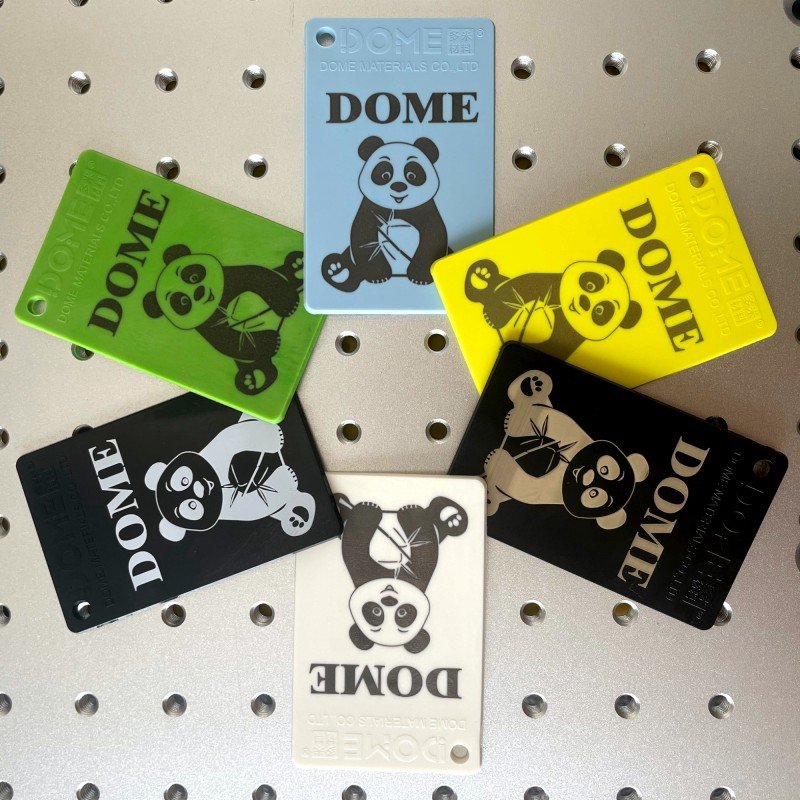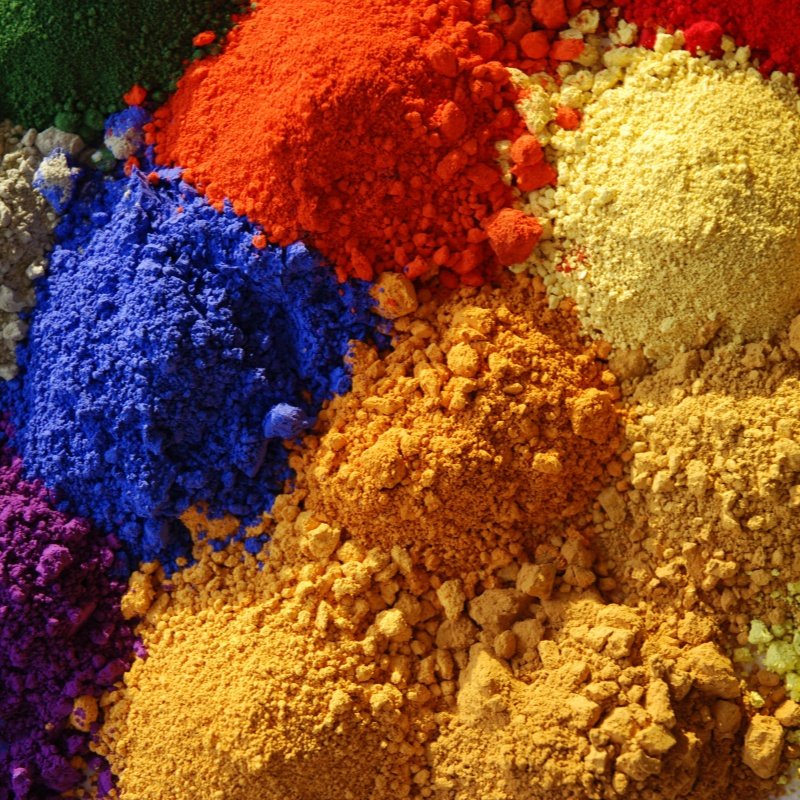1. Why is the laser marking on plastic unclear?
Unclear marking can result from:
- Surface contaminants (oil, dust) are preventing effective laser interaction. Clean the surface thoroughly.
- Incorrect laser focus. Adjust the focal distance.
- High marking speed or low power causes insufficient energy. Optimize parameters.
- Poor laser absorption in light-colored or flame-retardant/fiber-filled plastics. Add laser marking additives to enhance absorption.
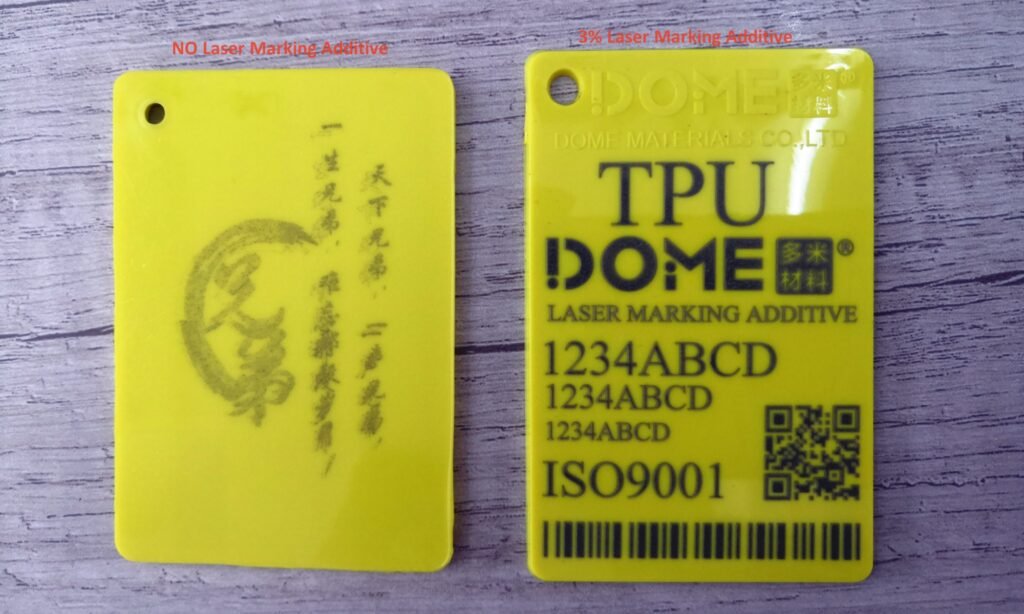
2. Why does the plastic surface bubble during laser marking?
Bubbling occurs when laser energy is too low to carbonize the material, causing decomposition of certain components into gas. Solutions include:
- Increasing laser energy to achieve proper carbonization.
- Switching to a laser marking machine that is better suited for the plastic type.
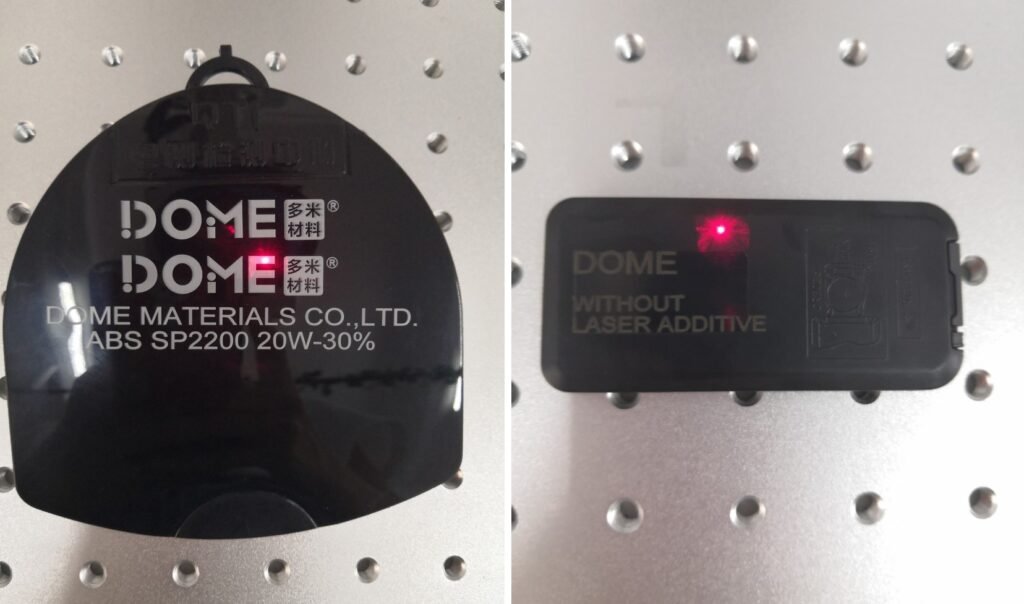
3. Why does the plastic surface sink during laser marking?
Sinking happens when high laser peak power or low material melting point causes excessive localized heating, leading to corrosion or vaporization. To address this:
- Reduce laser peak power.
- Select a more suitable laser marking machine for the material.
4. What causes excessive carbonization during laser marking?
Excessive carbonization, resulting in uneven black spots or cracks, is due to excessive laser energy. Solutions:
- Lower the laser energy to find the optimal range for marking.
5. Why does the laser pass through transparent plastics without marking?
Transparent or translucent plastics often allow laser light to pass through without interaction. Add laser marking additives to improve energy absorption and produce clear marks.
6. How can edge burning or blackening be prevented?
Edge burning occurs due to high laser power density or slow scanning speed, causing excessive heat accumulation. Preventive measures:
- Reduce laser power density.
- Increase scanning speed to minimize heat buildup.
- Use additives to enhance uniform energy absorption.
7. Why is the laser marking speed slow?
Slow marking can result from:
- Suboptimal laser parameters (power, scanning speed). Adjust settings for efficiency.
- Low laser energy absorption by the plastic. Add laser marking additives to improve absorption and speed.
8. Why is laser marking on black plastics (e.g., PE, TPU, ABS) ineffective despite additives?
For white marking on black plastics, the raw material should ideally be transparent or natural-colored. Excessive carbon black in black plastics can interfere with laser absorption. Specialized additives (e.g., laser marking masterbatch) containing specific carbon black can replace standard black pigments, eliminating the need for additional carbon black.
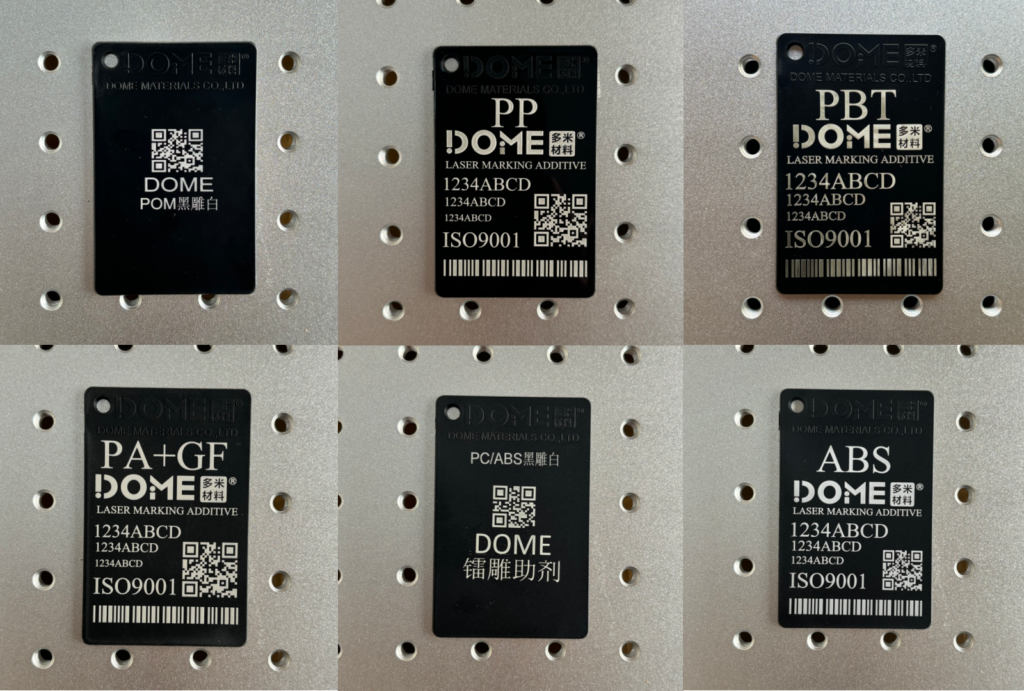
9. How can the scratch resistance of laser markings be improved?
To enhance durability:
- Use fiber lasers instead of UV lasers, as fiber lasers create more wear-resistant marks through carbonization.
- Add laser marking additives to improve mark adhesion.
- Incorporate glass fiber (e.g., ABS+GF, PA+GF) to enhance scratch resistance.
10. What are the common issues with laser marking additives?
- Addition Ratio: Typically 0.1%-0.3% of laser marking pigment powder, and 1-3% of laser-sensitive masterbatches, but adjust based on plastic type, color, thickness, and laser power through testing.
- Compatibility: Poor compatibility can cause surface defects or reduced mechanical properties. Select compatible additives and control addition rates.
- Color Changes: Additives may alter plastic color. Use color-matched additives or adjust formulations.
- Storage Stability: Improper storage (moisture, oxidation) can degrade additive performance. Store in sealed, dry, cool, and dark conditions.
- Environmental Safety: Some additives may contain heavy metals. Choose eco-friendly, compliant additives.
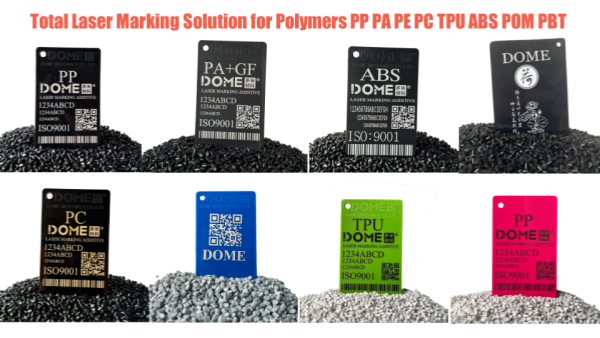
11. How can dark or burnt marks be avoided in laser engraving?
For plastics lacking laser absorption, unclear or burnt marks can occur. Add laser marking additives (e.g., laser powder, masterbatch) during processing to enhance absorption, ensuring clear marks without burning. Additives address:
- Light-colored or fiber-filled plastics are not marking darkly enough.
- Black plastics produce smoky, blurry marks.
- Slow marking speeds.
12. Which laser wavelength is best for preventing edge burning?
- CO₂ Lasers (10.6 µm): Strong absorption by most plastics, but may cause blackening on light/transparent plastics.
- UV Lasers (355 nm): High energy, minimal heat-affected zone, ideal for heat-sensitive plastics and high-precision marking.
- Fiber Lasers (1.064 µm): High efficiency and beam quality, reducing edge burning on certain plastics.
13. Which plastics are best suited for UV laser marking?
UV lasers excel in:
- ABS: Produces clear, durable marks without surface damage, used in electronics and appliances.
- PP: Creates precise marks with minimal thermal impact, ideal for packaging.
- PC: High-contrast marks without affecting transparency, used in electronics and automotive parts.
- PE: Clear marks for packaging applications.
- PVC: Fine, durable marks for construction and packaging.
- Flame-Retardant Plastics: High-resolution marks without thermal damage.
14. Which plastics are commonly used for laser marking?
Laser marking works on PP, PE, PVC, ABS, TPU, TPE, TPV, TPR, PBT, PET, PC, PA, POM, PEI, nylon, and epoxy resin. Marks can be black, white, or golden, depending on the plastic and additive used. For challenging plastics (e.g., high calcium carbonate or glass fiber content), specialized additives ensure effective marking.
15. Why Use Laser Marking Additives?
Laser marking is a durable and versatile method for marking plastic surfaces, offering benefits such as improved quality control and brand protection.
However, not all polymers respond equally to laser marking. Thermoplastic materials like TPU and PP, for example, are not highly responsive to laser absorption. In these cases, laser marking additives are often necessary to achieve the desired marking effect without altering the color or properties of the plastic.
Laser marking additives enable high-contrast, permanent, and repeatable markings. They also provide precise control for clear and fast marking of polymers.
When choosing laser marking additives for your plastics, it’s essential to select products that are fully compatible and do not compromise the material’s properties or performance.
16. How do laser marking additives improve the process?
Additives address:
- Clarity: Enhance laser absorption for sharper marks.
- Edge Burning: Promote uniform energy absorption to prevent burning.
- Durability: Improve mark adhesion for scratch resistance.
- Material Range: Enable marking on diverse plastics, including modified or recycled materials.
- Efficiency: Increase marking speed for higher productivity.
- Color Options: Support black, white, gold, or colored marks.
17. How do Laser Marking Additives improve marking efficiency?
Efficiency gains depend on plastic type, laser equipment, and additive dosage, but improvements include:
- PP/PE: Marking speed can increase several times (e.g., from a few characters/second to over a dozen).
- ABS: Complex patterns marked 1-2 times faster (e.g., from 1-2 minutes to 30-60 seconds).
- PC: Speed improvements of 50%-100% (e.g., halved marking time for phone shells).
- Flame-Retardant Plastics: Speed increases of 2-3 times with maintained quality.
18. What are the alternative names for Laser Marking Additives?
Laser Marking Additives are also referred to as:
- Laser Powder / Laser Engraving Powder / Laser Marking Powder / Laser Marking Pigment / Laser Engraving Color Powder / Laser Pigment
- Laser Engraving Additives
- Laser Marking Masterbatch
- Plastic Laser Engraving Auxiliaries
- Laser Marking Compound
- Laser-Sensitive Additive
- Laser Etching Additive
- Marking Enhancer / Marking Additive
- Laser Colorant
- Laser-Reactive Pigment
- Laser Marking Agent
- Laser-Absorbing Additive
- Laser-Responsive Material
- Laser-Enhancing Additive,
- Laser-Compatible Colorant.
19. Why Choose DOME Materials’ Laser Marking Additives?
- Proven Expertise: With 16+ years in the plastic laser marking industry, we deliver trusted, innovative solutions tailored to your needs.
- Superior Quality: Our laser-sensitive additives and masterbatches meet top standards for accuracy and durability, ensuring clear, lasting marks on every project, whether using laser compounds, reactive pigments, or absorbing additives.
- Custom Solutions: Each application is unique. We provide fully customized additives for your specific requirements, from laser etching to marking enhancers, maximizing your marking performance.
- Wide Product Range: Our High-Performance Laser-Sensitive Additives Produce Consistent, Durable Marks On a Variety Of Plastics, including PP, PA/Nylon, PE, POM, TPU, TPE, PC, ABS, and PBT.

